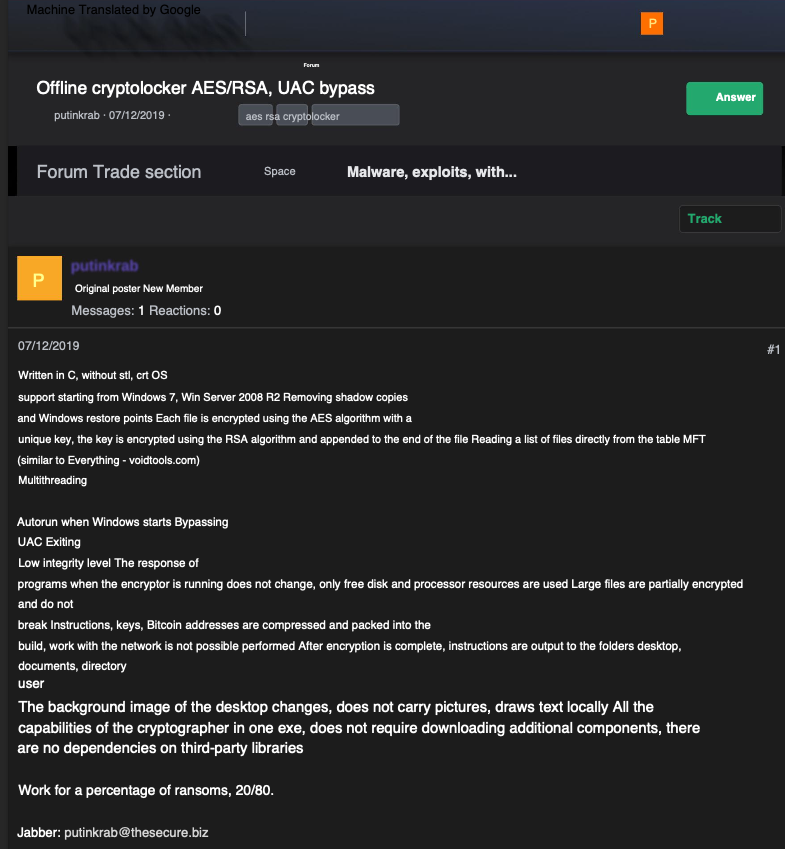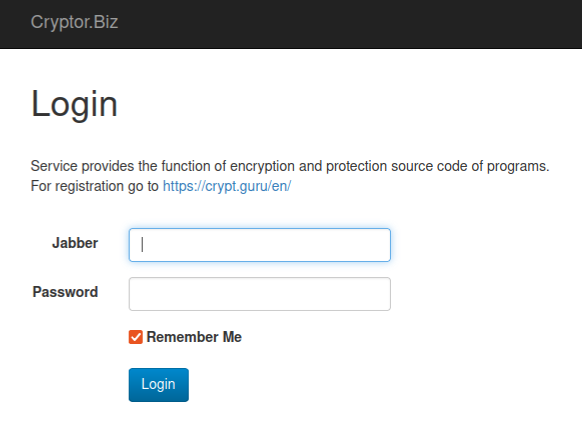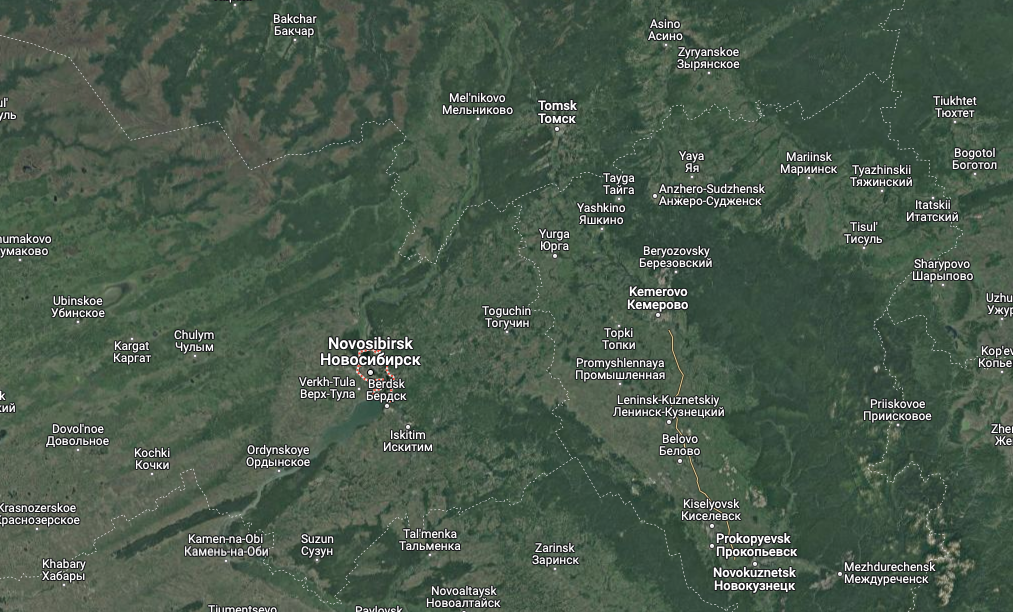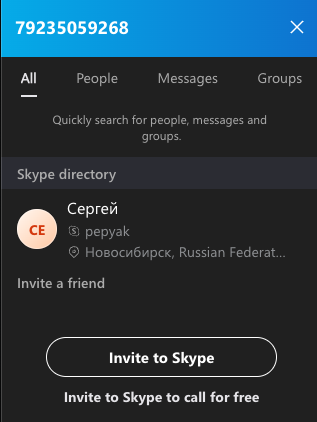Last week, the United States joined the U.K. and Australia in sanctioning and charging a Russian man named Dmitry Yuryevich Khoroshev as the leader of the infamous LockBit ransomware group. LockBit’s leader “LockBitSupp” claims the feds named the wrong guy, saying the charges don’t explain how they connected him to Khoroshev. This post examines the activities of Khoroshev’s many alter egos on the cybercrime forums, and tracks the career of a gifted malware author who has written and sold malicious code for the past 14 years.

Dmitry Yuryevich Khoroshev. Image: treasury.gov.
On May 7, the U.S. Department of Justice indicted Khoroshev on 26 criminal counts, including extortion, wire fraud, and conspiracy. The government alleges Khoroshev created, sold and used the LockBit ransomware strain to personally extort more than $100 million from hundreds of victim organizations, and that LockBit as a group extorted roughly half a billion dollars over four years.
Federal investigators say Khoroshev ran LockBit as a “ransomware-as-a-service” operation, wherein he kept 20 percent of any ransom amount paid by a victim organization infected with his code, with the remaining 80 percent of the payment going to LockBit affiliates responsible for spreading the malware.
Financial sanctions levied against Khoroshev by the U.S. Department of the Treasury listed his known email and street address (in Voronezh, in southwest Russia), passport number, and even his tax ID number (hello, Russian tax authorities). The Treasury filing says Khoroshev used the emails sitedev5@yandex.ru, and khoroshev1@icloud.com.
According to DomainTools.com, the address sitedev5@yandex.ru was used to register at least six domains, including a Russian business registered in Khoroshev’s name called tkaner.com, which is a blog about clothing and fabrics.
A search at the breach-tracking service Constella Intelligence on the phone number in Tkaner’s registration records — 7.9521020220 — brings up multiple official Russian government documents listing the number’s owner as Dmitri Yurievich Khoroshev.
Another domain registered to that phone number was stairwell[.]ru, which at one point advertised the sale of wooden staircases. Constella finds that the email addresses webmaster@stairwell.ru and admin@stairwell.ru used the password 225948.
DomainTools reports that stairwell.ru for several years included the registrant’s name as “Dmitrij Ju Horoshev,” and the email address pin@darktower.su. According to Constella, this email address was used in 2010 to register an account for a Dmitry Yurievich Khoroshev from Voronezh, Russia at the hosting provider firstvds.ru.

Image: Shutterstock.
Cyber intelligence firm Intel 471 finds that pin@darktower.ru was used by a Russian-speaking member called Pin on the English-language cybercrime forum Opensc. Pin was active on Opensc around March 2012, and authored 13 posts that mostly concerned data encryption issues, or how to fix bugs in code.
Other posts concerned custom code Pin claimed to have written that would bypass memory protections on Windows XP and Windows 7 systems, and inject malware into memory space normally allocated to trusted applications on a Windows machine.
Pin also was active at that same time on the Russian-language security forum Antichat, where they told fellow forum members to contact them at the ICQ instant messenger number 669316.
A search on the ICQ number 669316 at Intel 471 shows that in April 2011, a user by the name NeroWolfe joined the Russian cybercrime forum Zloy using the email address d.horoshev@gmail.com, and from an Internet address in Voronezh, RU.
Constella finds the same password tied to webmaster@stairwell.ru (225948) was used by the email address 3k@xakep.ru, which Intel 471 says was registered to more than a dozen NeroWolfe accounts across just as many Russian cybercrime forums between 2011 and 2015.
NeroWolfe’s introductory post to the forum Verified in Oct. 2011 said he was a system administrator and C++ coder.
“Installing SpyEYE, ZeuS, any DDoS and spam admin panels,” NeroWolfe wrote. This user said they specialize in developing malware, creating computer worms, and crafting new ways to hijack Web browsers.

“I can provide my portfolio on request,” NeroWolfe wrote. “P.S. I don’t modify someone else’s code or work with someone else’s frameworks.”
In April 2013, NeroWolfe wrote in a private message to another Verified forum user that he was selling a malware “loader” program that could bypass all of the security protections on Windows XP and Windows 7.
“The access to the network is slightly restricted,” NeroWolfe said of the loader, which he was selling for $5,000. “You won’t manage to bind a port. However, it’s quite possible to send data. The code is written in C.”
In an October 2013 discussion on the cybercrime forum Exploit, NeroWolfe weighed in on the karmic ramifications of ransomware. At the time, ransomware-as-a-service didn’t exist yet, and many members of Exploit were still making good money from “lockers,” relatively crude programs that locked the user out of their system until they agreed to make a small payment (usually a few hundred dollars via prepaid Green Dot cards).
Lockers, which presaged the coming ransomware scourge, were generally viewed by the Russian-speaking cybercrime forums as harmless moneymaking opportunities, because they usually didn’t seek to harm the host computer or endanger files on the system. Also, there were still plenty of locker programs that aspiring cybercriminals could either buy or rent to make a steady income.
NeroWolfe reminded forum denizens that they were just as vulnerable to ransomware attacks as their would-be victims, and that what goes around comes around.
“Guys, do you have a conscience?,” NeroWolfe wrote. “Okay, lockers, network gopstop aka business in Russian. The last thing was always squeezed out of the suckers. But encoders, no one is protected from them, including the local audience.”
If Khoroshev was ever worried that someone outside of Russia might be able to connect his early hacker handles to his real life persona, that’s not clear from reviewing his history online. In fact, the same email address tied to so many of NeroWolfe’s accounts on the forums — 3k@xakep.ru — was used in 2011 to create an account for a Dmitry Yurevich Khoroshev on the Russian social media network Vkontakte.
NeroWolfe seems to have abandoned all of his forum accounts sometime in 2016. In November 2016, an exploit[.]ru member filed an official complaint against NeroWolfe, saying NeroWolfe had been paid $2,000 to produce custom code but never finished the project and vanished.
It’s unclear what happened to NeroWolfe or to Khoroshev during this time. Maybe he got arrested, or some close associates did. Perhaps he just decided it was time to lay low and hit the reset on his operational security efforts, given his past failures in this regard. It’s also possible NeroWolfe landed a real job somewhere for a few years, fathered a child, and/or had to put his cybercrime career on hold.
Or perhaps Khoroshev saw the coming ransomware industry for the endless pot of gold that it was about to become, and then dedicated himself to working on custom ransomware code. That’s what the government believes.
The indictment against Khoroshev says he used the hacker nickname Putinkrab, and Intel 471 says this corresponds to a username that was first registered across three major Russian cybercrime forums in early 2019.
KrebsOnSecurity could find no obvious connections between Putinkrab and any of Khoroshev’s older identities. However, if Putinkrab was Khoroshev, he would have learned from his past mistakes and started fresh with a new identity (which he did). But also, it is likely the government hasn’t shared all of the intelligence it has collected against him (more on that in a bit).
Putinkrab’s first posts on the Russian cybercrime forums XSS, Exploit and UFOLabs saw this user selling ransomware source code written in C.

A machine-translated ad for ransomware source code from Putinkrab on the Russian language cybercrime forum UFOlabs in 2019. Image: Ke-la.com.
In April 2019, Putkinkrab offered an affiliate program that would run on top of his custom-made ransomware code.
“I want to work for a share of the ransoms: 20/80,” Putinkrab wrote on Exploit. “20 percent is my percentage for the work, you get 80% of the ransoms. The percentage can be reduced up to 10/90 if the volumes are good. But now, temporarily, until the service is fully automated, we are working using a different algorithm.”
Throughout the summer of 2019, Putinkrab posted multiple updates to Exploit about new features being added to his ransomware strain, as well as novel evasion techniques to avoid detection by security tools. He also told forum members he was looking for investors for a new ransomware project based on his code.
In response to an Exploit member who complained that the security industry was making it harder to profit from ransomware, Putinkrab said that was because so many cybercriminals were relying on crappy ransomware code.
“The vast majority of top antiviruses have acquired behavioral analysis, which blocks 95% of crypto-lockers at their root,” Putinkrab wrote. “Cryptolockers made a lot of noise in the press, but lazy system administrators don’t make backups after that. The vast majority of cryptolockers are written by people who have little understanding of cryptography. Therefore, decryptors appear on the Internet, and with them the hope that files can be decrypted without paying a ransom. They just sit and wait. Contact with the owner of the key is lost over time.”
Putinkrab said he had every confidence his ransomware code was a game-changer, and a huge money machine.
“The game is just gaining momentum,” Putinkrab wrote. “Weak players lose and are eliminated.”
The rest of his response was structured like a poem:
“In this world, the strongest survive.
Our life is just a struggle.
The winner will be the smartest,
Who has his head on his shoulders.”
Putinkrab’s final post came on August 23, 2019. The Justice Department says the LockBit ransomware affiliate program was officially launched five months later. From there on out, the government says, Khoroshev adopted the persona of LockBitSupp. In his introductory post on Exploit, LockBit’s mastermind said the ransomware strain had been in development since September 2019.
The original LockBit malware was written in C (a language that NeroWolfe excelled at). Here’s the original description of LockBit, from its maker:
“The software is written in C and Assembler; encryption is performed through the I/O Completion Port; there is a port scanning local networks and an option to find all DFS, SMB, WebDAV network shares, an admin panel in Tor, automatic test decryption; a decryption tool is provided; there is a chat with Push notifications, a Jabber bot that forwards correspondence and an option to terminate services/processes in line which prevent the ransomware from opening files at a certain moment. The ransomware sets file permissions and removes blocking attributes, deletes shadow copies, clears logs and mounts hidden partitions; there is an option to drag-and-drop files/folders and a console/hidden mode. The ransomware encrypts files in parts in various places: the larger the file size, the more parts there are. The algorithms used are AES + RSA.
You are the one who determines the ransom amount after communicating with the victim. The ransom paid in any currency that suits you will be transferred to your wallets. The Jabber bot serves as an admin panel and is used for banning, providing decryption tools, chatting – Jabber is used for absolutely everything.”
Does the above timeline prove that NeroWolfe/Khoroshev is LockBitSupp? No. However, it does indicate Khoroshev was for many years deeply invested in countless schemes involving botnets, stolen data, and malware he wrote that others used to great effect. NeroWolfe’s many private messages from fellow forum members confirm this.
NeroWolfe’s specialty was creating custom code that employed novel stealth and evasion techniques, and he was always quick to volunteer his services on the forums whenever anyone was looking help on a malware project that called for a strong C or C++ programmer.
Someone with those qualifications — as well as demonstrated mastery of data encryption and decryption techniques — would have been in great demand by the ransomware-as-a-service industry that took off at around the same time NeroWolfe vanished from the forums.
Someone like that who is near or at the top of their game vis-a-vis their peers does not simply walk away from that level of influence, community status, and potential income stream unless forced to do so by circumstances beyond their immediate control.
It’s important to note that Putinkrab didn’t just materialize out of thin air in 2019 — suddenly endowed with knowledge about how to write advanced, stealthy ransomware strains. That knowledge clearly came from someone who’d already had years of experience building and deploying ransomware strains against real-life victim organizations.
Thus, whoever Putinkrab was before they adopted that moniker, it’s a safe bet they were involved in the development and use of earlier, highly successful ransomware strains. One strong possible candidate is Cerber ransomware, the most popular and effective affiliate program operating between early 2016 and mid-2017. Cerber thrived because it emerged as an early mover in the market for ransomware-as-a-service offerings.
In February 2024, the FBI seized LockBit’s cybercrime infrastructure on the dark web, following an apparently lengthy infiltration of the group’s operations. The United States has already indicted and sanctioned at least five other alleged LockBit ringleaders or affiliates, so presumably the feds have been able to draw additional resources from those investigations.
Also, it seems likely that the three national intelligence agencies involved in bringing these charges are not showing all of their cards. For example, the Treasury documents on Khoroshev mention a single cryptocurrency address, and yet experts interviewed for this story say there are no obvious clues connecting this address to Khoroshev or Putinkrab.
But given that LockBitSupp has been actively involved in Lockbit ransomware attacks against organizations for four years now, the government almost certainly has an extensive list of the LockBit leader’s various cryptocurrency addresses — and probably even his bank accounts in Russia. And no doubt the money trail from some of those transactions was traceable to its ultimate beneficiary (or close enough).
Not long after Khoroshev was charged as the leader of LockBit, a number of open-source intelligence accounts on Telegram began extending the information released by the Treasury Department. Within hours, these sleuths had unearthed more than a dozen credit card accounts used by Khoroshev over the past decade, as well as his various bank account numbers in Russia.
The point is, this post is based on data that’s available to and verifiable by KrebsOnSecurity. Woodward & Bernstein’s source in the Watergate investigation — Deep Throat — famously told the two reporters to “follow the money.” This is always excellent advice. But these days, that can be a lot easier said than done — especially with people who a) do not wish to be found, and b) don’t exactly file annual reports.







If you operate a cybercrime business that relies on disseminating malicious software, you probably also spend a good deal of time trying to disguise or “crypt” your malware so that it appears benign to antivirus and security products. In fact, the process of “crypting” malware is sufficiently complex and time-consuming that most serious cybercrooks will outsource this critical function to a handful of trusted third parties. This story explores the history and identity behind Cryptor[.]biz, a long-running crypting service that is trusted by some of the biggest names in cybercrime.
Virtually all malware that is deployed for use in data stealing at some point needs to be crypted. This highly technical, laborious process involves iteratively altering the appearance and behavior of a malicious file until it no longer sets off alarm bells when scanned by different antivirus tools.
Experienced malware purveyors understand that if they’re not continuously crypting their malware before sending it out, then a lot more of whatever digital disease they are trying to spread is going to get flagged by security tools. In short, if you are running a cybercrime enterprise and you’re not equipped to handle this crypting process yourself, you probably need to pay someone else to do it for you.
Thanks to the high demand for reliable crypting services, there are countless cybercriminals who’ve hung out their shingles as crypting service providers. However, most of these people do not appear to be very good at what they do, because most are soon out of business.
One standout is Cryptor[.]biz. This service is actually recommended by the purveyors of the RedLine information stealer malware, which is a popular and powerful malware kit that specializes in stealing victim data and is often used to lay the groundwork for ransomware attacks. Cryptor[.]biz also has been recommended to customers of the Vidar information stealer malware family (via the malware’s Telegram support channels).
As good as Cryptor[.]biz may be at obfuscating malware, its proprietor does not appear to have done a great job covering his own tracks. The registration records for the website Cryptor[.]biz are hidden behind privacy protection services, but the site’s homepage says potential customers should register by visiting the domain crypt[.]guru, or by sending a Jabber instant message to the address “masscrypt@exploit.im.”
Crypt[.]guru’s registration records also are hidden, yet passive domain name system (DNS) records for both cryptor[.]biz and crypt[.]guru show that in 2018 the domains were forwarding incoming email to the address obelisk57@gmail.com.
Cyber intelligence firm Intel 471 reports that obelisk57@gmail.com was used to register an account on the forum Blacksoftware under the nickname “Kerens.” Meanwhile, the Jabber address masscrypt@exploit.im has been associated with the user Kerens on the Russian hacking forum Exploit from 2011 to the present day.

The login page for Cryptor dot biz contains several clues about who runs the service.
The very first post by Kerens on Exploit in 2011 was a negative review of a popular crypting service that predated Cryptor[.]biz called VIP Crypt, which Kerens accused of being “shitty” and unreliable. But Intel 471 finds that after his critical review of VIP Crypt, Kerens did not post publicly on Exploit again for another four years until October 2016, when they suddenly began advertising Cryptor[.]biz.
Intel 471 found that Kerens used the email address pepyak@gmail.com, which also was used to register Kerens accounts on the Russian language hacking forums Verified and Damagelab.
Ironically, Verified has itself been hacked multiple times over the years, with its private messages and user registration details leaked online. Those records indicate the user Kerens registered on Verified in March 2009 from an Internet address in Novosibirsk, a city in the southern Siberian region of Russia.
In 2010, someone with the username Pepyak on the Russian language affiliate forum GoFuckBiz[.]com shared that they typically split their time during the year between living in Siberia (during the milder months) and Thailand (when Novosibirsk is typically -15 °C/°5F).
For example, in one conversation about the best car to buy for navigating shoddy roads, Pepyak declared, “We have shitty roads in Siberia.” In January 2010, Pepyak asked the GoFuckBiz community where one might find a good USB-based modem in Phuket, Thailand.
DomainTools.com says the email address pepyak@gmail.com was used to register 28 domain names over the years, including a now-defunct Russian automobile sales website called “autodoska[.]biz.” DomainTools shows this website was registered in 2008 to a Yuri Churnov from Sevastpol, Crimea (prior to Russia’s annexation of Crimea in 2014, the peninsula was part of Ukraine).
The WHOIS records for autodoska[.]biz were changed in 2010 to Sergey Purtov (pepyak@gmail.com) from Yurga, a town in Russia’s Kemerovo Oblast, which is a relatively populous area in Western Siberia that is adjacent to Novosibirsk.

A satellite view of the region including Novosibirsk, Yurga and Kemerovo Oblast. Image: Google Maps.
Many of the 28 domains registered to pepyak@gmail.com have another email address in their registration records: unforgiven57@mail.ru. According to DomainTools, the Unforgiven email address was used to register roughly a dozen domains, including three that were originally registered to Keren’s email address — pepyak@gmail.com (e.g., antivirusxp09[.]com).
One of the domains registered in 2006 to the address unforgiven57@mail.ru was thelib[.]ru, which for many years was a place to download pirated e-books. DomainTools says thelib[.]ru was originally registered to a Sergey U Purtov.
Most of the two-dozen domains registered to pepyak@gmail.com shared a server at one point with a small number of other domains, including mobile-soft[.]su, which was registered to the email address spurtov@gmail.com.
CDEK, an express delivery company based in Novosibirsk, was apparently hacked at some point because cyber intelligence firm Constella Intelligence found that its database shows the email address spurtov@gmail.com was assigned to a Sergey Yurievich Purtov (Сергей Юрьевич Пуртов).
DomainTools says the same phone number in the registration records for autodoska[.]biz (+7.9235059268) was used to secure two other domains — bile[.]ru and thelibrary[.]ru, both of which were registered to a Sergey Y Purtov.
 A search on the phone number 79235059268 in Skype reveals these digits belong to a “Sergey” from Novosibirsk with the now-familiar username — Pepyak.
A search on the phone number 79235059268 in Skype reveals these digits belong to a “Sergey” from Novosibirsk with the now-familiar username — Pepyak.
Bringing things full circle, Constella Intelligence shows that various online accounts tied to the email address unforgiven57@mail.ru frequently relied on the somewhat unique password, “plk139t51z.” Constella says that same password was used for just a handful of other email addresses, including gumboldt@gmail.com.
Hacked customer records from CDEK show gumboldt@gmail.com was tied to a customer named Sergey Yurievich Purtov. DomainTools found that virtually all of the 15 domain names registered to gumboldt@gmail.com (including the aforementioned mobile-soft[.]su) were at one point registered to spurtov@gmail.com.
Intel 471 reports that gumboldt@gmail.com was used in 2009 to register a user by the nickname “Kolumb” on the Russian hacking forum Antichat. From Kolumb’s posts on Antichat, it seems this user was mostly interested in buying access to compromised computers inside of Russia.
Then in December 2009, Kolumb said they were in desperate need of a reliable crypting service or full-time cryptor.
“We need a person who will crypt software every day, sometimes even a couple of times a day,” Kolumb wrote on Antichat.
Mr. Purtov did not respond to requests for comment sent to any of the email addresses referenced in this report. Mail.ru responded that the email address spurtov@mail.ru is no longer active.
As KrebsOnSecurity opined on Mastodon earlier this week, it makes a lot of sense for cybersecurity researchers and law enforcement alike to focus attention on the top players in the crypting space — for several reasons. Most critically, the cybercriminals offering time-tested crypting services also tend to be among the most experienced and connected malicious coders on the planet.
Think of it this way: By definition, a crypting service scans and examines all types of malware before those new nasties are first set loose in the wild. This fact alone should make these criminal enterprises a primary target of cybersecurity firms looking to gain more timely intelligence about new malware.
Also, a review of countless posts and private messages from Pepyak and other crypting providers shows that a successful crypting service will have direct and frequent contact with some of the world’s most advanced malware authors.
In short, infiltrating or disrupting a trusted crypting service can be an excellent way to slow down or even sideline a large number of cybercrime operations all at once.
Further reading on the crypting industry:
This Service Helps Malware Authors Fix Flaws in Their Code
Antivirus is Dead: Long Live Antivirus!














vm2-1200





















































Explore the nature of vulnerabilities in this episode of ThreatWise TV.
It’s shaping up to be another big year for vulnerability disclosure. Already the number of Common Vulnerabilities and Exposures (CVEs) disclosed has crossed 18,000 and it’s on track to make this another record-breaking year.
With new CVEs being disclosed daily, it has become increasingly difficult for security teams to stay abreast of the latest risks, let alone quickly determine which ones apply to their network environment. From those, prioritizing which CVEs to patch first adds an additional wrinkle to the process.
If this wasn’t challenging enough, a curve ball that’s often lobbed at security teams are the “breaking news” vulnerabilities— vulnerabilities picked up by the security media, often with much fanfare. The stories surrounding these high-profile vulnerabilities generally carry an implied threat that the CVE in question will throw the doors wide open to attackers if not addressed immediately. What security team hasn’t had someone from the C-suite share an article they’ve read, asking “are we protected from this?”
On the surface, CVEs that appear severe enough to garner media attention do seem like a good place to start when addressing vulnerabilities in your environment. But vulnerabilities are complicated, and what a security researcher manages to do within a controlled environment doesn’t always translate into real-world attacks. In fact, most disclosed vulnerabilities never see active exploitation. And of those that do, not every vulnerability ends up becoming a tool in an attacker’s arsenal. Bad actors generally follow the path of least resistance when they compromise a network, relying on tested exploits long before trying something new and unproven.
This begs the question: how much overlap is there between the most talked about vulnerabilities and those that are widely used in attacks? Moreover, if media attention isn’t a reliable indicator, what else might predict if a vulnerability will be used in an attack?
To answer these questions, we used intelligence tools available from Cisco’s Kenna Security risk-based vulnerability management (RBVM) software. In particular, Kenna.VI+ consolidates a variety of vulnerability intelligence, where a CVE ID lookup can pull back a wealth of information. In addition to this, Kenna.VI+ includes an API that brings in an additional layer of external threat intelligence, enabling further analysis.
We started with a direct comparison of Successful Exploitations and Chatter Count from within Kenna.VI+. The former is a full count of confirmed exploits within the dataset, while the latter is a count of mentions in the news, social media, various forums, and the dark web.
Our first pass at the data included a comparison of the top 50 CVEs in both Successful Exploitations and Chatter Count. However, there were only two CVEs that overlapped. The data showed that many of the top exploited CVEs were old and predated the data in Chatter Count. We quickly decided that this wasn’t a fair comparison.
To get a better look at more relevant CVEs, we limited the dataset to a range of 10 years. Unfortunately, this did not do much to improve things—only three CVEs showed up in both lists.
A more effective approach was to look at CVEs that we know are actively being exploited. The Cybersecurity and Infrastructure Security Agency (CISA) happens to maintain such a list. The Known Exploited Vulnerabilities (KEV) catalog is considered an authoritative compilation of vulnerabilities identified as being actively exploited in the wild.
Running the KEV catalog though Kenna.VI+ resulted in six CVEs that appeared in the top 50 for both lists, with a single overlap in the top 10. This leads us to conclude that the vulnerabilities with the most discussion are not the same as those being actively exploited in the majority of cases.
| CVE | Brief description | |
| 1 | CVE-2017-9841 | PHPUnit vulnerability (used to target popular CMSes) |
| 2 | CVE-2021-44228 | Log4j vulnerability |
| 3 | CVE-2019-0703 | Windows SMB information disclosure vulnerability |
| 4 | CVE-2014-0160 | Heartbleed vulnerability |
| 5 | CVE-2017-9805 | REST plugin in Apache Struts vulnerability |
| 6 | CVE-2017-11882 | Microsoft Office memory corruption vulnerability |
| 7 | CVE-2017-5638 | Apache Struts vulnerability (used in Equifax breach) |
| 8 | CVE-2012-1823 | 10-year-old PHP vulnerability |
| 9 | CVE-2017-0144 | EternalBlue vulnerability |
| 10 | CVE-2018-11776 | Apache Struts RCE vulnerability |
| CVE | Brief description | |
| 1 | CVE-2021-26855 | Microsoft Exchange vulnerability (used in Hafnium attacks) |
| 2 | CVE-2021-40444 | Microsoft MSHTML RCE vulnerability |
| 3 | CVE-2021-26084 | Confluence Server and Data Center vulnerability |
| 4 | CVE-2021-27065 | Microsoft Exchange vulnerability (used in Hafnium attacks) |
| 5 | CVE-2021-34473 | Microsoft Exchange vulnerability (used in Hafnium attacks) |
| 6 | CVE-2021-26858 | Microsoft Exchange vulnerability (used in Hafnium attacks) |
| 7 | CVE-2021-44228 | Log4j vulnerability |
| 8 | CVE-2021-34527 | One of the PrintNightmare vulnerabilities |
| 9 | CVE-2021-41773 | Apache HTTP Server vulnerability |
| 10 | CVE-2021-31207 | One of the ProxyShell vulnerabilities |
Despite the lack of overlap, there are many well-known vulnerabilities at the top of both lists. Heartbleed and EternalBlue appear on the top 10 exploited list, while Hafnium, PrintNightmare, and ProxyShell make the top 10 most talked about CVEs.
The Log4j vulnerability is the only CVE that appears in both lists. This isn’t surprising considering the ubiquity of Log4j in modern software. It’s the second-most exploited vulnerability—far outpacing the CVEs directly below it. This, coupled with its appearance in the chatter list, puts it in a class of its own. In a brief period, it’s managed to outpace older CVEs that are arguably just as well known.
The CVE that recorded the most successful exploitations is a five-year-old vulnerability in PHPUnit. This is a popular unit-testing framework that’s used by many CMSes, such as Drupal, WordPress, MediaWiki, and Moodle.
Since many websites are built with these tools, this exploit can be a handy vector for gaining initial access to unpatched webservers. This also lines up with research we conducted last year, where this vulnerability was one of the most common Snort detections seen by Cisco Secure Firewall.
All four of the Microsoft Exchange Server vulnerabilities used in the Hafnium attacks appear in the most talked about list of CVEs. However, even when you add all four of these CVEs together, they still don’t come anywhere close to the counts seen in the top exploited CVEs.
If media attention is not a good predictor of use for exploitation, then what are the alternatives?
The Common Vulnerability Scoring System (CVSS) is a well-known framework for gauging the severity of vulnerabilities. We looked for CVEs from the KEV catalog that were ranked as “critical”—9.0 and above in the CVSSv3 specification. Examining the entire KEV catalog, 28% of the CVEs have a score of 9.0 or higher. Of the top 50 successfully exploited, 38% had such scores.
This is an improvement, but the CVSSv3 specification was released in 2015. Many CVEs in the KEV catalog predate this—19% of the entire catalog and 28% of the top 50—and have no score.
Using the previous CVSS specification does fill this gap—36% overall and 52% of the top 50 score 9.0 or higher. However, the older CVSS specification comes with its share of issues as well.
Another indicator worth exploring is remote control execution (RCE). A vulnerability with RCE grants an attacker the ability to access and control a vulnerable system from anywhere. It turns out that 45% of the CVEs in our dataset allow for RCE, and 66% of the top 50, making it the most worthwhile indicator analyzed.
Let’s summarize how we’ve honed our approach to determine if media attention and exploitation line up:
| Data set | Exploitation and Chatter lists | Number of CVEs |
| All CVEs | Appears in both top 50 | 2 |
| Appears in both top 50 (last 10 years) | 3 | |
| KEV Catalog | Appears in both top 50 | 6 |
| Appears in both top 10 | 1 |
And here’s a summary of our look at other indicators:
| KEV Catalog | Top 50 exploited | |
| CVSSv3 (9.0+) | 28% | 38% |
| CVSS (9.0+) | 36% | 52% |
| Allows for RCE | 45% | 66% |
All of this analysis provides a clear answer to our original question—the most regularly exploited CVEs aren’t the most talked about. Additional work highlights that monitoring variables like RCE can help with prioritization.
For illustrative purposes we’ve only looked at a few indicators that could be used to prioritize CVEs. While some did better than others, we don’t recommend relying on a single variable in making decisions about vulnerability management. Creating an approach that folds in multiple indicators is a far better strategy when it comes to real-world application of this data. And while our findings here speak to the larger picture, every network is different.
Regardless of which list they appear on, be it Successful Exploitations or Chatter Count, it’s important to point out that all these vulnerabilities are serious. Just because Hafnium has more talk than Heartbleed doesn’t make it any less dangerous if you have assets that are vulnerable to it. The fact is that while CVEs with more talk didn’t make the top of the exploitation list, they still managed to rack up tens of thousands of successful exploitations.
It’s important to know how to prioritize security updates, fixing those that expose you to the most risk as soon as possible. From our perspective, here are some basic elements in the Cisco Secure portfolio that can help.
Kenna Security, a pioneer in risk-based vulnerability management, relies on threat intel and prioritization to keep security and IT teams focused on risks. Using data science, Kenna processes and analyzes 18+ threat and exploit intelligence feeds, and 12.7+ billion managed vulnerabilities to give you an accurate view of your company’s risk. With our risk scoring and remediation intelligence, you get the info you need to make truly data-driven remediation decisions.
To responsibly protect a network, it’s important to monitor all assets that connect to it and ensure they’re kept up to date. Duo Device Trust can check the patch level of devices for you before they’re granted access to connect to corporate applications or sensitive data. You can even block access and enable self-remediation for devices that are found to be non-compliant.
How about remote workers? By leveraging the Network Visibility Module in Cisco Secure Client as a telemetry source, Cisco Secure Cloud Analytics can capture endpoint-specific user and device context to supply visibility into remote worker endpoint status. This can bolster an organization’s security posture by providing visibility on remote employees that are running software versions with vulnerabilities that need patching.
Lastly, for some “lateral thinking” about vulnerability management, take a look at this short video of one of our Advisory CISOs, Wolfgang Goerlich. Especially if you’re a fan of the music of the 1920s…
We’d love to hear what you think. Ask a Question, Comment Below, and Stay Connected with Cisco Secure on social!
Cisco Secure Social Channels

















apple-1200












apple-1200






